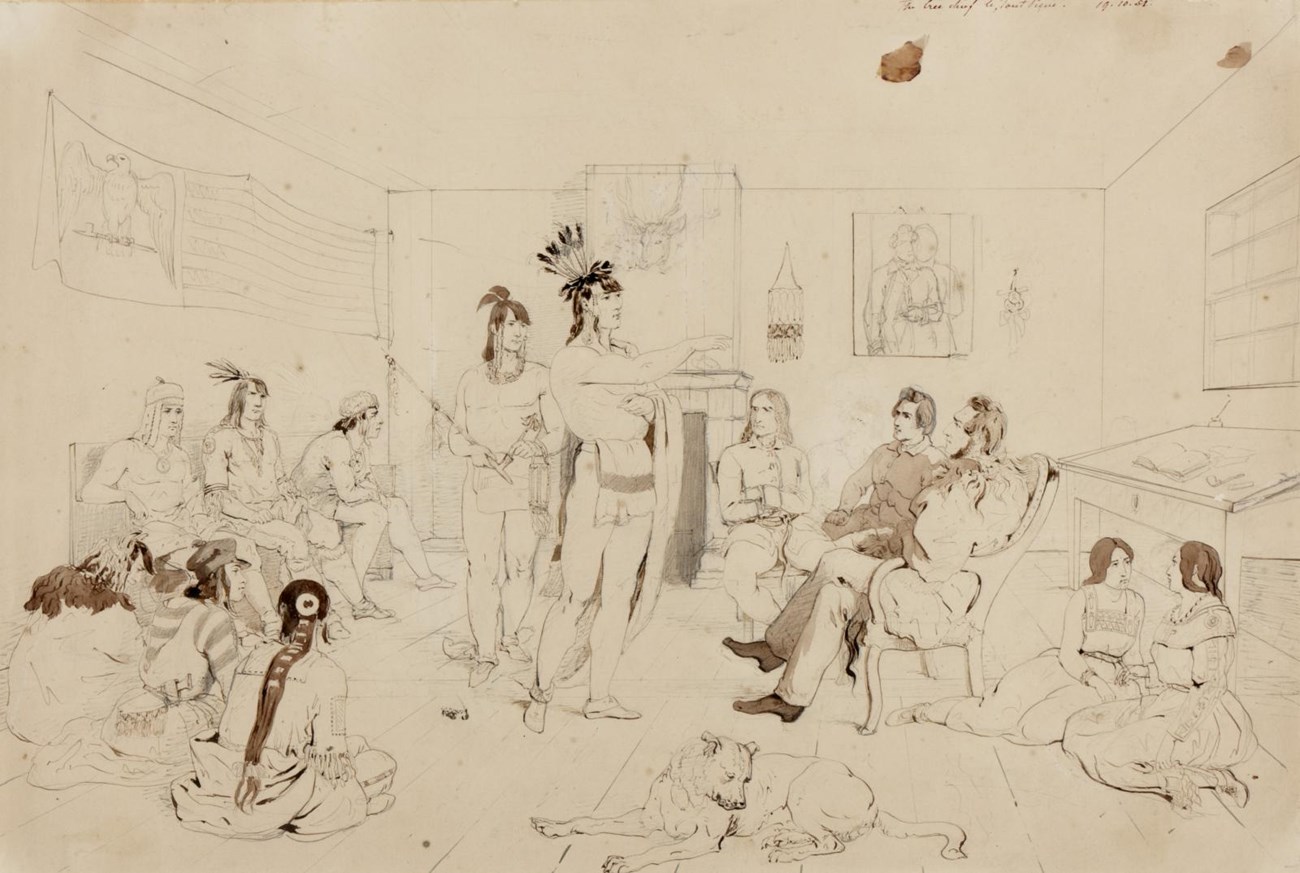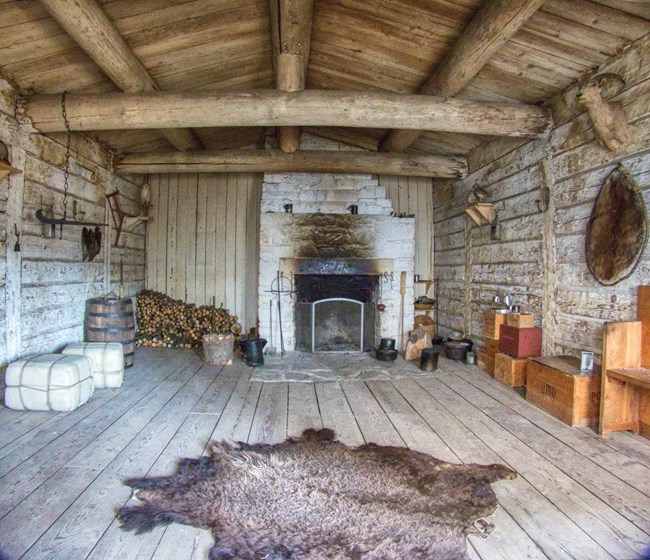Last updated: May 20, 2020
Article
Fort Union's Trade House

Kurz, Friedrich. The Cree Chief, Le Tout Pigue. 1326.1092. 1852. Tulsa: Gilcrease Museum, https://collections.gilcrease.org/object/13261092 (02/14/2017).
The Grandest Fort on the Upper Missouri River
Between 1828 and 1867, Fort Union was the most important fur trade post on the Upper Missouri River. Here, the Assiniboine and other Northern Plains Tribes exchanged buffalo robes and smaller furs for goods from around the world, including cloth, guns, blankets, and beads. A bastion of peaceful coexistence, the post annually traded over 25,000 buffalo robes and $100,000 in merchandise.
Trade House Construction
The Trade House consists of three rooms: the Reception Room, the Trade Shop, and the Clerk’s Office. The Trade House was most likely the first structure built by the American Fur Company after their arrival at the confluence region in 1828. As the Trade House would be the center of the trading process, it was important to have it operational as soon as possible. It is perhaps for this reason that the Trade House's roughhewn logs and sod roof differs in construction style from the rest of the fort. Since the layout was so well suited to its role, it retained the same basic configuration for the majority of the 39 years of the post’s existence.

THE TRADE HOUSE
The Reception Room was the first room entered and was easily the most important of the three rooms. It was in the Reception Room where Tribal leaders met with the American Fur Company Traders to discuss the terms of the trade, where stories were told, and small feasts were held. The room was sparsely furnished, with only one bench for sitting, but decorated with many curios from both cultures.
The Trade Shop was a showroom for fur company wares. It stocked more than 200 different items that generally fall into one of two categories: laborsaving or ornamental.
- Laborsaving items were manufactured items like fabric, metal knives and copper or tin cook pots. These items were durable, long-lasting and saved labor via both the making of the item and the use of the item. For example, a few yards of fabric could make a lightweight dress or shirt. This fabric saved the labor of hunting, butchering and eventual tanning of an elk, deer or other animal hide in order to have the leather to make the dress or shirt.
- Ornamental items are items that are purchased for their decoration. Many items in this category could be considered jewelry, like German silverwork ear wheels, ear bobs and broaches. Other items could be considered supplies, like Venetian glass beads, Chinese vermillion mineral pigment, brass tacks and small tin and copper tinklers (cones).
- Some of these items were made onsite, the fort employed blacksmiths and tinsmiths would have made a majority of tin and metal work traded, including arrowhead and spearpoints. Fort Tailors would have made some ready-made shirts and elaborate jackets called "Chiefs Coat’s” which was one of the most expensive items traded in the Trade House. Most of the manufactured items were imported from overseas, including fabric from France, beads from Italy, woolen blankets from England, and guns from Belgium.
The Clerk’s Office was located in the third room of the Trade House. The room was used by clerks to track the paperwork involved in running the fort, including trade good inventories, expenses, and accounts. Also, the room was occasionally used as a meeting place between the Bourgeois and important American Indian Chiefs and their delegations.
